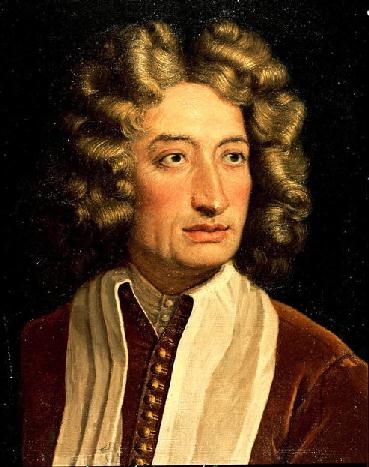Arcangelo Corelli: A Complete Biography
Introduction
Arcangelo Corelli (1653–1713) was an Italian composer and violinist who played a pivotal role in shaping the Baroque style, particularly in the realm of instrumental music. Revered during his lifetime and long after, Corelli’s work helped elevate the violin to new heights of expression and technique. His influence extended across Europe, profoundly impacting composers such as Johann Sebastian Bach, George Frideric Handel, and Antonio Vivaldi. Known for his elegant compositional style, refined technique, and commitment to instrumental purity, Corelli occupies a unique position in music history: a master who wrote relatively little but revolutionized much.

Childhood
Arcangelo Corelli was born on February 17, 1653, in the small town of Fusignano, located in the Papal States (present-day Italy). His family was part of the local nobility, though not particularly wealthy. His father, also named Arcangelo, died just a few weeks before Corelli’s birth, leaving the young boy to be raised by his mother, Santa Corelli, in a deeply religious and culturally modest environment.
Corelli displayed musical aptitude early in life. According to biographer Peter Allsop, local clerics likely provided his first music lessons, which were predominantly vocal and church-related, as was common for the time. However, Corelli showed a strong inclination toward the violin, an instrument gaining prominence during the mid-17th century.
Youth
By 1666, Corelli had moved to Faenza, and shortly after to Lugo, where he received formal musical training. His talents as a violinist and budding composer began to flourish. He likely studied with musicians from nearby churches and courts. Around 1666–1670, Corelli traveled to Bologna, then one of the most important musical centers in Italy and home to the esteemed Accademia Filarmonica. He was admitted to the academy at a young age—a testament to his extraordinary talent.
Bologna shaped his musical identity. There, he encountered some of the most significant violinists of the era, such as Giovanni Benvenuti and Leonardo Brugnoli. This period solidified his technical command of the violin and exposed him to advanced compositional techniques.
Adulthood
In the early 1670s, Corelli settled in Rome, which became his lifelong home and the backdrop to his most important artistic accomplishments. Rome, under the cultural patronage of powerful cardinals and aristocrats, offered Corelli both protection and opportunities. He entered the service of Queen Christina of Sweden, a patron of the arts who had relocated to Rome after abdicating her throne. Later, Corelli worked under Cardinal Pietro Ottoboni, his most influential patron.
During this time, Corelli became known not only as a composer but also as a conductor and violinist. He was frequently called upon to direct large ensembles for festive occasions, including significant papal celebrations. By the late 1680s, he was leading orchestras of 100 musicians or more, a considerable feat in the Baroque era.
Corelli was also a dedicated teacher. His students included prominent musicians such as Francesco Geminiani, Pietro Locatelli, and Giovanni Battista Somis. Through them, his stylistic legacy spread across Europe.
Despite his fame and influence, Corelli was a reserved and meticulous composer. He published only six opus numbers in his lifetime, comprising trio sonatas, solo sonatas, and concerti grossi. Yet each collection had enormous impact.
Major Compositions
Corelli’s oeuvre is concise but foundational in the Baroque repertoire. His six published works are:
1. Trio Sonatas, Op. 1 (1681) & Op. 3 (1689)
These sets of sonatas for two violins and continuo were instrumental in codifying the church sonata (sonata da chiesa) form. They demonstrated his clarity of structure and contrapuntal elegance.
2. Chamber Sonatas, Op. 2 (1685) & Op. 4 (1694)
These follow the sonata da camera form, incorporating dance movements. They show Corelli’s lyrical sensitivity and fine balance between violin parts.
3. Solo Violin Sonatas, Op. 5 (1700)
A landmark in violin literature, this collection included the famous “La Folia” variations, which became one of the most frequently played pieces of the Baroque era. This work elevated the expressive and technical possibilities of the violin.
4. Concerti Grossi, Op. 6 (published posthumously in 1714)
Corelli’s most influential contribution, these twelve concerti grossi established the form as a staple of Baroque orchestral music. They demonstrated the contrast between concertino (solo group) and ripieno (full ensemble), inspiring composers like Handel and Vivaldi.
Corelli’s music is marked by balance, harmony, and restraint. He avoided excessive virtuosity in favor of compositional symmetry and emotional depth. Richard Taruskin noted that “Corelli set the tone for a century of string writing,” and Grove Music Online underscores his role in “standardizing tonal relationships and articulating form with clarity.”
Death
Arcangelo Corelli died in Rome on January 8, 1713, at the age of 59. He never married and left behind no known children. In his will, he bequeathed his substantial wealth and valuable art collection to his patron and friend, Cardinal Ottoboni.
Corelli was buried with honor in the Pantheon, one of the highest tributes for a musician of his time. His funeral was attended by numerous members of the Roman aristocracy and musical elite, a testament to the respect and admiration he commanded during his life.
Conclusion
Arcangelo Corelli was a master architect of the Baroque instrumental style. Though his output was relatively small, each of his compositions became a model for countless successors. As a performer, teacher, and composer, he helped elevate the violin to its rightful place in the hierarchy of instruments and laid the foundations for later giants like Bach and Handel.
Through elegant formal structures, lyrical melodies, and harmonic clarity, Corelli left a permanent mark on Western music. His name continues to symbolize the sophistication, grace, and order of the high Baroque, and his legacy remains deeply woven into the history of classical music.

Comments are closed